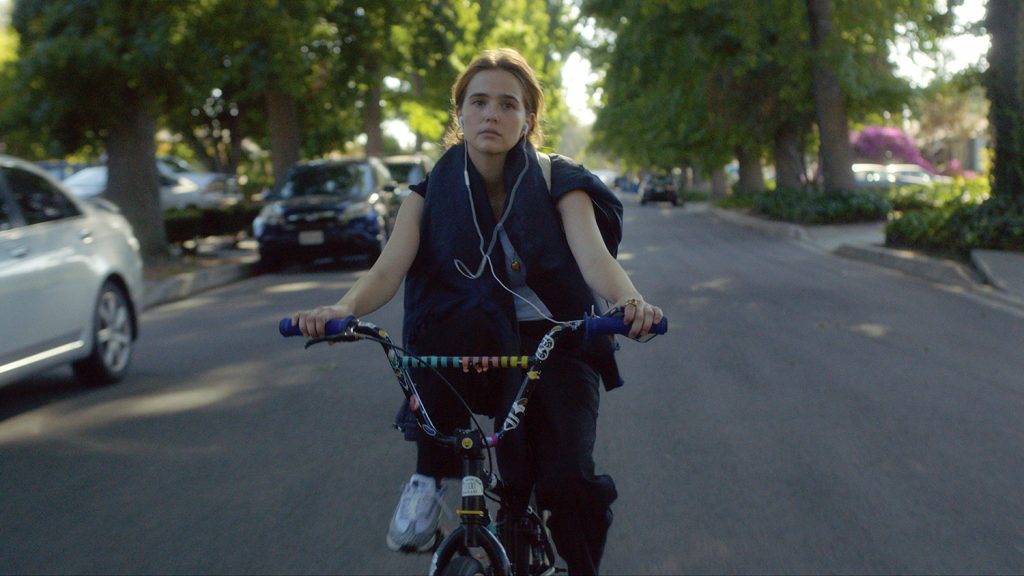This article originally appeared on mysterycatalog.com.
40 years ago, Lynne Sachs took a video class at Manhattan’s DCTV (Downtown Community Television Center). In the next four decades she made dozens of remarkable films and beginning this Friday, June 7, DCTV will present From the Outside In, seven programs showcasing the variety of her important work with the artist present at each screening. Go here for program and ticket information.
Her films have been influenced (either cited by her or by my estimation) by many great artists and movements: Vietnamese filmmaker and professor Trinh T. Min-ha (whose classes I also attended while at San Francisco State University), Chris Marker (“Sans Soleil”), the dance/film aesthetics of Yvonne Rainer and Meredith Monk, early underground filmmakers like Bruce Baillie, body art performance artist Carolee Schneeman, pioneering lesbian filmmaker Barbara Hammer, American feminist documentary filmmaker Martha Rosler, left politics, the French avant-garde lettrism movement, post-colonial studies, Nina Menkes and much more. She is one of the most important American experimental filmmakers still active today.
Here are my personal and political notes on ten of her films I viewed or re-viewed recently. All of them are included in the DCTV programs.
Ladies Wear (1983) Lynn and her brother (film director Ira Sachs) both paint their nails while on a subway car. (An ‘80s subway decorated by graffiti; they get off at the Spring street stop.) Themes: NYC, gender, graffiti as a form of public cosmetics. Her first film.
Fossil (1986) In Mambai in Bali, Indonesian female workers dredge sand from the river onto containers they balance on their heads. This is contrasted with a dance performance by Sachs and other dancers as response to the movements of the Bali workers. Mixing the workaday rhythms of laborers with a modern dance interpretation is a tactic she will employ in many of her films.
Drawn & Quartered (1987) A nude male and female are separated into four quadrants of the film frame. Sachs says this was the year she “first encountered Laura Mulvey’s theory of the ‘male gaze’, seen Carolee Schneeman’s ‘Fuses’, pondered Yvonne Rainer’s ‘Lives of Performers.’”

Investigation of a Flame (2001) We are in Chris Marker territory here. (And please see his incredible 1977 film, “The Grin Without a Cat.”) Stock footage of the Vietnam War is intercut with the story of the Catonsville Nine. In 1968 Daniel Berrigan and eight other Vietnam War protestors stole boxes of selective service records to a park and burned them with homemade napalm. Sachs interviews the participants, including a female clerk at the selective service office who explains why she felt she failed American soldiers who wouldn’t be relieved by new recruits. A moving exploration of our moral responsibility to confront the foreign policies of our country, no matter the cost to us.
Tornado (2001) A short meditation on 9/11. She folds a torn calendar of September 2001 while explaining how her daughter’s response to the tragedy was to “mourn the twins.”
The Task of the Translator (2010) Inspired by Walter Benjamin’s essay “The Task of the Translator,” this short contrasts the improbable assignment of Latin scholars translating a newspaper story about Iraqi burial rituals with accounts wartime cosmetic surgery and human remains.

The Washing Society (2018) Co-directed with Lizzie Olesker, this 44-minute film is one of my favorites. Workers at a few of the thousands of NYC laundromats talk about their work days as ghosts from an 1881 organization of African-American laundresses in Atlanta reappear. Intimate connections (like the one I have with my local laundromat workers) are being replaced by “super laundries” where conditions are more factory-like. (Recall that a super laundry was atop the meth lab in the TV series “Breaking Bad!”) Required reading: Chapter 10 (“The Working Day”) of Karl Marx’s “Capital: Volume 1.”
A Year in Notes and Numbers (2019) Closeups of to-do notes are combined with test results from her annual physical. This is a beautiful example of making art out of miscellaneous documentation.
E•pis•to•lar•y: Letter to Jean Vigo (2021) What does Jean Vigo’s great 1933 film “Zero for Conduct” have to do with footage of the January 6, 2021 assault on the U.S. Capitol building? When is anarchy good and when is it bad?
Swerve (2022) I have written about this short film here.
Go here for program and ticket information.






